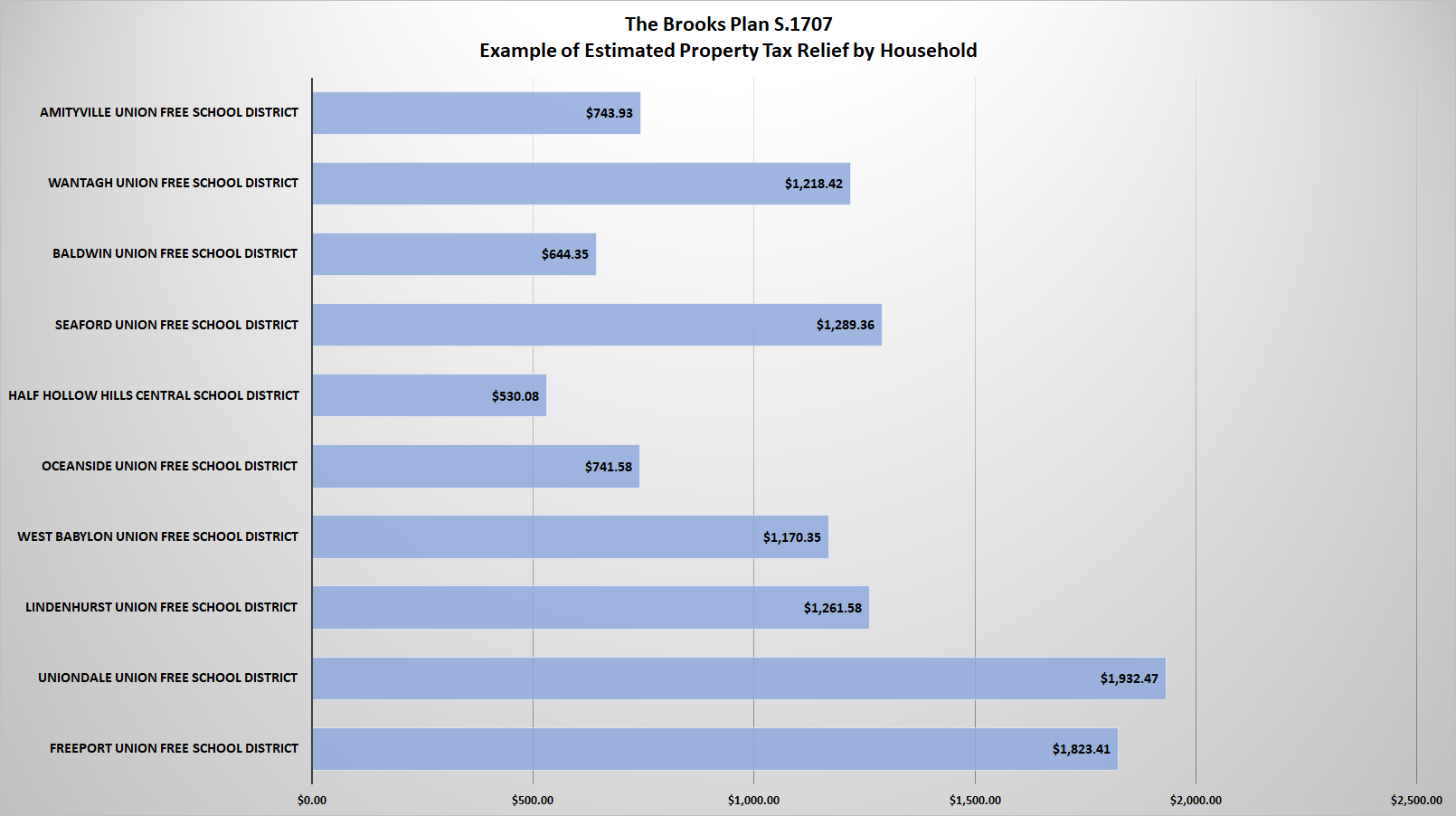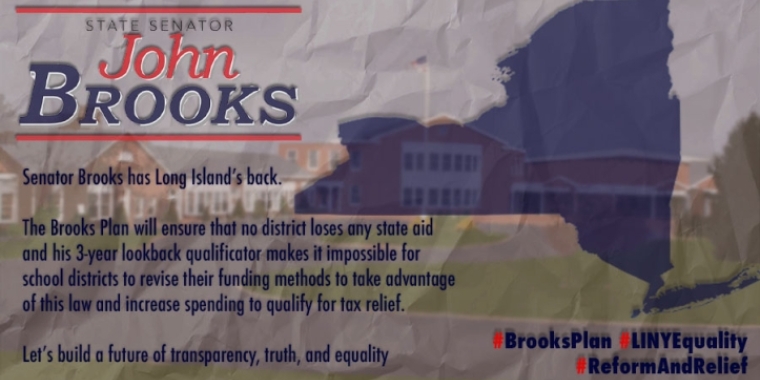
Senator Brooks Proposes $1.7 Billion in Education Property Tax Relief
Senator John E. Brooks
February 18, 2020

Massapequa, NY -- NYS Senator John E. Brooks has officially introduced Senate Bill S.1707 that will provide $1.7 Billion in property tax relief for homeowners living in school districts currently burdened with an excessive over-dependence of residential property taxes for the funding of public education.
“We have long recognized that the use of residential property taxes to fund public education is by no means the most ideal and fair way to fund public education,” said Senator Brooks. “With the enactment of the Federal Tax Cuts and Jobs Act of 2017 and the cap placed on the deductibility of state and local taxes (SALT) the over-dependence on residential property taxes to fund public education became an even greater problem than before.”
The Brooks Plan places a cap of 50 percent of total school spending as the maximum tax level a school district can draw from residential property. Currently, many school districts draw in excess of 70 percent of its education costs from residential property taxes. While a 2 percent tax cap on the maximum annual increases in taxes has been enacted, a maximum school tax level has yet to be specifically addressed. The Brooks Plan is a big step forward in making school funding far more equitable than its current form.
The Brooks Plan helps mitigate the impact of the existing cap that has been placed on the deductibility of SALT. As it stands now, tax payers in New York State are capped at $10,000 for the deduction of SALT in regards to their federal income taxes. Many homeowners across the state have residential property taxes far in excess of that limit and therefore not only lose the ability to deduct expenses over $10,000, but are also being taxed on said amounts that exceed the imposed limit.
The resulting estimates from the new federal tax law indicate that last year, New Yorkers paid an additional $15 Billion in taxes to the federal government. Take a minute and let that statistic sink in… New Yorkers paid $15 Billion more in taxes this year than they did previously and were taxed on it. By definition, the Brooks Plan will also help mitigate the negative financial impact of the federal tax law by reducing the amount of money subject to federal taxes.
The Brooks Plan makes homeownership more affordable. Homeowners all over the state are struggling to pay the excessive property tax levels currently in place. This is particularly true for senior citizens living on fixed incomes, many of whom are “house rich” but cash poor, and therefore not in any position to handle these ever-increasing expenses. It is also important to note that the same beneficial impact will occur for first time homeowners, or those that wish to be, due to the lower tax levy.

The Brooks Plan provides pure tax relief. The tax relief funding is provided to the district only after the final budget has been voted on and approved by voters meaning that these funds cannot be used for additional spending – only tax relief! The qualification for the reduction is passed on a 3-year lookback, that is to say, the district tax funded by residential property taxes must have exceeded 50 percent of total spending three years ago, making it impossible for school districts to revise their funding methods to take advantage of this law and effectively increase spending to qualify for tax relief.
The Brooks Plan recognizes that we must transform the way we fund public education to a system that is more equitable, less dependent on residential property taxes, and utilizes true financial capability considerations to fund public education.
Under the Brooks Plan, no district loses any state aid. Often in the past, when proposals to reform educational funding have been made, money is taken away from some districts to help fund other districts. Under this plan the formulas remain the same. If a district sees any reduction it would solely be the result of changes on the district level ie: reduced enrollment.
As we have similarly funded property taxes year in/year out without ever taking away from state aid, so too would we fund this program. Each year we have increased state aid, based on existing formulas, to provide additional funding in order to increase school spending for districts in financial need. Under the Brooks Plan we will also be providing assistance to those districts excessively dependent on the use of residential property taxes to fund education.
Finally, The Brooks Plan takes into consideration districts with high levels of wealthy in terms of eligibility for the program. By using the 3-year lookback we ensure it is not possible for any given district to manipulate the system. Ultimately, The Brooks Plan mitigates the sting of the SALT penalty while moving us forward to a more equitable funding of public education.
related legislation
Share this Article or Press Release
Newsroom
Go to NewsroomSenator Brooks 2022 Woman of Distinction
August 26, 2022



